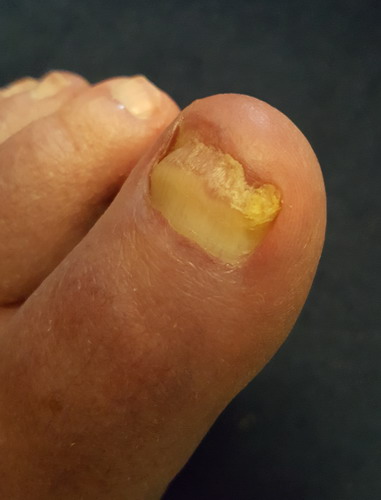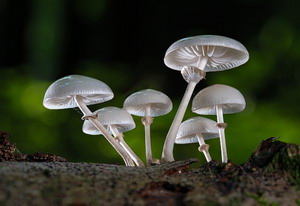 Remember the old guessing game 20 questions? One of the first questions involved establishing whether the object to be guessed was animal, vegetable, or mineral. But what if it was none of those? This is the realm of fungus. This fungal realm includes molds, yeasts, mushrooms, and it involves over 3 million species. Some of these we love as foods, such as truffles, and others we love as cooking mushrooms, leavening agents for bread, as well as fermenting agents for beer and wine. So most fungus is useful and even delicious at times, but some species are not so friendly.
Remember the old guessing game 20 questions? One of the first questions involved establishing whether the object to be guessed was animal, vegetable, or mineral. But what if it was none of those? This is the realm of fungus. This fungal realm includes molds, yeasts, mushrooms, and it involves over 3 million species. Some of these we love as foods, such as truffles, and others we love as cooking mushrooms, leavening agents for bread, as well as fermenting agents for beer and wine. So most fungus is useful and even delicious at times, but some species are not so friendly.
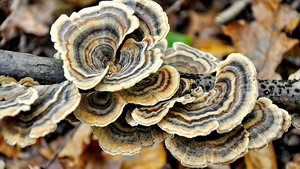 Fungus survives by decomposing things. In the natural world that is a very good thing, as these fungi break down dead plants and return the nutrients to the soil. Many fungi have close, mutually supportive relationships with plants through the mycelial network of fungal growth in the soil that helps plant roots absorb water and nutrients. Technically, fungus shares the same classification as humans – omnivorous saprophytes, meaning we both eat dead plants and animals. But what happens when we humans are the food source for these fungi? We have dead cells throughout our body – millions die every day. The entire outer surface of our skin is made of dead cells. Fungi live to decompose dead things, like skin cells. Our gut is full of dead plant and animal cells from the food we eat. Fungi like that as well. What about the constant dying of cells throughout our body? If fungi can get to these cells, they will set up shop inside our body. As you might guess, this is not a good thing. These are foreign invaders and our immune system really takes issue with such things.
Fungus survives by decomposing things. In the natural world that is a very good thing, as these fungi break down dead plants and return the nutrients to the soil. Many fungi have close, mutually supportive relationships with plants through the mycelial network of fungal growth in the soil that helps plant roots absorb water and nutrients. Technically, fungus shares the same classification as humans – omnivorous saprophytes, meaning we both eat dead plants and animals. But what happens when we humans are the food source for these fungi? We have dead cells throughout our body – millions die every day. The entire outer surface of our skin is made of dead cells. Fungi live to decompose dead things, like skin cells. Our gut is full of dead plant and animal cells from the food we eat. Fungi like that as well. What about the constant dying of cells throughout our body? If fungi can get to these cells, they will set up shop inside our body. As you might guess, this is not a good thing. These are foreign invaders and our immune system really takes issue with such things.
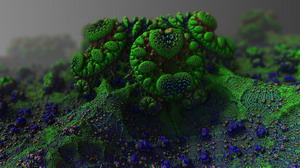 Usually, our immune system keeps fungus out of our insides, but when our immune system is compromised or suppressed by drugs, fungus can attack. Right now there is an epidemic in India of a black fungus that attacks the eyes, sinus, and brain. Thousands have lost their eyes as a consequence. The trigger seems to be either they are immune-suppressed due to recovering from covid 19 or as a consequence of the steroid drugs used to treat covid. Steroid use has a long history of exacerbating fungus infections.
Usually, our immune system keeps fungus out of our insides, but when our immune system is compromised or suppressed by drugs, fungus can attack. Right now there is an epidemic in India of a black fungus that attacks the eyes, sinus, and brain. Thousands have lost their eyes as a consequence. The trigger seems to be either they are immune-suppressed due to recovering from covid 19 or as a consequence of the steroid drugs used to treat covid. Steroid use has a long history of exacerbating fungus infections.
 Every time you end up on antibiotics for some infection or other, fungus overgrowth in our GI tract is the usual result. Leaky gut tends to make this fungus spread to lots of other areas of the body. Probably the most common forms are oral thrush from the candida fungus, as well as vaginosis. In our gut, there is a constant turf war going on between types of bacteria, fungus, and viruses all trying to establish stable colonies on the gut wall. When we take an antibiotic, this kills off many of the bacterial colonies, creating room for lots of colonization by fungus, like Candida albicans. Antibiotics don’t touch fungus, but they stop the reproduction of the infection-causing bacteria they are taken for, and hundreds of other friendly bacteria species as well. This allows the fungus to take over as their competition has been eliminated. To combat this, I always recommend patients take a special supplemental probiotic made from a good guy yeast called Saccharomyces boulardii. This little critter eats candida for breakfast to keep it from growing out of hand. I use this same supplement for folks that simply have too much candida in their guts due to a ghetto gut diet or previous history with antibiotics.
Every time you end up on antibiotics for some infection or other, fungus overgrowth in our GI tract is the usual result. Leaky gut tends to make this fungus spread to lots of other areas of the body. Probably the most common forms are oral thrush from the candida fungus, as well as vaginosis. In our gut, there is a constant turf war going on between types of bacteria, fungus, and viruses all trying to establish stable colonies on the gut wall. When we take an antibiotic, this kills off many of the bacterial colonies, creating room for lots of colonization by fungus, like Candida albicans. Antibiotics don’t touch fungus, but they stop the reproduction of the infection-causing bacteria they are taken for, and hundreds of other friendly bacteria species as well. This allows the fungus to take over as their competition has been eliminated. To combat this, I always recommend patients take a special supplemental probiotic made from a good guy yeast called Saccharomyces boulardii. This little critter eats candida for breakfast to keep it from growing out of hand. I use this same supplement for folks that simply have too much candida in their guts due to a ghetto gut diet or previous history with antibiotics.
 Fungi of all sorts like moist dark living conditions. Think of where the mold grows in your house – in the bathroom where moisture is high, in the grout of the sink tiles, behind the headboard of your bed, and along the frames of your windows. Mushrooms love the dark moist areas in the forest. Most fungi do not like bright sunlight, or more specifically the UV radiation in that light. A similar area in our body is our sinuses – dark and moist. 95% of sinus infections are actually from fungus. That is why taking antibiotics for a sinus infection is either worthless or actually makes the problem worse. Many sorts of fungi live in our ear canals. Women are well familiar with vaginal fungal infections – more dark moist areas. How about jock rot, athlete’s foot, and fungal toenail infections? Always wearing tight clothing and hiding our feet in shoes create an ideal breeding ground for different fungi.
Fungi of all sorts like moist dark living conditions. Think of where the mold grows in your house – in the bathroom where moisture is high, in the grout of the sink tiles, behind the headboard of your bed, and along the frames of your windows. Mushrooms love the dark moist areas in the forest. Most fungi do not like bright sunlight, or more specifically the UV radiation in that light. A similar area in our body is our sinuses – dark and moist. 95% of sinus infections are actually from fungus. That is why taking antibiotics for a sinus infection is either worthless or actually makes the problem worse. Many sorts of fungi live in our ear canals. Women are well familiar with vaginal fungal infections – more dark moist areas. How about jock rot, athlete’s foot, and fungal toenail infections? Always wearing tight clothing and hiding our feet in shoes create an ideal breeding ground for different fungi.
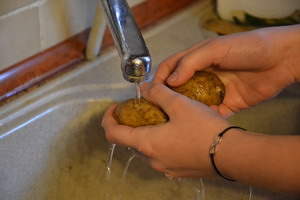 Some fungi are more tolerant of light or less moisture, such as the fungi that cause ringworm on the skin and dishpan hands – both fungal infections. Did you know that those white spots that look like reverse freckles are usually fungus? There are at least 300 different species of fungus that are pathogenic to humans, and over 8000 that attack living plants. Many of the plant lectins (poisons) found in the leaves and fruit are created by the plant to fight fungi and mold. Chemical warfare is a plant specialty since they can’t really run away or fight with swords and spears. Unfortunately, these poisons affect us as well and make various plants a poor choice for most of us to eat.
Some fungi are more tolerant of light or less moisture, such as the fungi that cause ringworm on the skin and dishpan hands – both fungal infections. Did you know that those white spots that look like reverse freckles are usually fungus? There are at least 300 different species of fungus that are pathogenic to humans, and over 8000 that attack living plants. Many of the plant lectins (poisons) found in the leaves and fruit are created by the plant to fight fungi and mold. Chemical warfare is a plant specialty since they can’t really run away or fight with swords and spears. Unfortunately, these poisons affect us as well and make various plants a poor choice for most of us to eat.
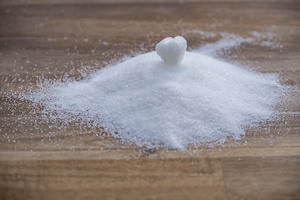 So what can we do to combat fungal growth in and on us? The first step to control pests of most sorts is to remove the incentive they have to move in in the first place. That usually means getting rid of their food supply. What are the foods that fungi like most? Think of bread yeast – what does it like? To get a yeast growing before adding it to the flour/dough mixture, you give it water and sugar. Fungi love simple carbs and moisture. They are kind of like school kids in that regard, always looking to hydrate with sugary drinks. So if you have a fungus problem, whether it be toenail fungus, athlete’s foot, ringworm, or candida anywhere, the first essential step is to stop eating carbs, especially sugars. That means the “Fungus Elimination Diet” is a keto diet. Do you want to cure that toenail fungus? Then you need to be on a keto diet. Do you have systemic candida problems with all the digestive issues and brain fog? Keto diet again. Yeast, mold, and other fungi love to eat simple carbs, so that means you must avoid them. Fungi love diabetics, so blood sugar control is a must.
So what can we do to combat fungal growth in and on us? The first step to control pests of most sorts is to remove the incentive they have to move in in the first place. That usually means getting rid of their food supply. What are the foods that fungi like most? Think of bread yeast – what does it like? To get a yeast growing before adding it to the flour/dough mixture, you give it water and sugar. Fungi love simple carbs and moisture. They are kind of like school kids in that regard, always looking to hydrate with sugary drinks. So if you have a fungus problem, whether it be toenail fungus, athlete’s foot, ringworm, or candida anywhere, the first essential step is to stop eating carbs, especially sugars. That means the “Fungus Elimination Diet” is a keto diet. Do you want to cure that toenail fungus? Then you need to be on a keto diet. Do you have systemic candida problems with all the digestive issues and brain fog? Keto diet again. Yeast, mold, and other fungi love to eat simple carbs, so that means you must avoid them. Fungi love diabetics, so blood sugar control is a must.
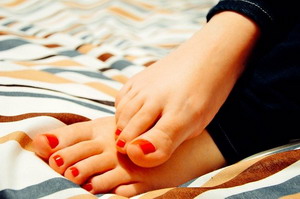 Number two on our remediation list is moisture. You can’t do much about the moisture in your gut, but for dishpan hands – get them out of the water. For vaginosis or jock itch – stop with the tight underwear made from non-breathable fabrics. You need airflow to get rid of the sweat down there. Feet – shoes are perfectly designed to give the fungus a safe lovely place to grow – dark and moist. Your feet need to breathe. Not only that, they like sunshine! Go barefoot or wear open sandals without socks as much as possible. Your whole body wants a good 5-10 minutes of sunshine daily, particularly early afternoon sun to get those sterilizing UV rays. At that dose, it is good for your skin. The bonus is you get some vitamin D production at the same time which boosts your immune system to help fight off the systemic fungus. Personally I “cheat” by using a UV sunlamp after I shower in the morning since I am inside working during the optimal hours for sunlight exposure.
Number two on our remediation list is moisture. You can’t do much about the moisture in your gut, but for dishpan hands – get them out of the water. For vaginosis or jock itch – stop with the tight underwear made from non-breathable fabrics. You need airflow to get rid of the sweat down there. Feet – shoes are perfectly designed to give the fungus a safe lovely place to grow – dark and moist. Your feet need to breathe. Not only that, they like sunshine! Go barefoot or wear open sandals without socks as much as possible. Your whole body wants a good 5-10 minutes of sunshine daily, particularly early afternoon sun to get those sterilizing UV rays. At that dose, it is good for your skin. The bonus is you get some vitamin D production at the same time which boosts your immune system to help fight off the systemic fungus. Personally I “cheat” by using a UV sunlamp after I shower in the morning since I am inside working during the optimal hours for sunlight exposure.
 What can we use to kill the fungus directly? Plants have evolved many different chemical fungus killers we can use to help us get rid of the fungus on us. Most of these are found in various essential plant oils. Top of the list is Tea Tree oil, Thyme oil (the active ingredient on old-school Listerine), Oregano oil, and many others. Straight essential oils are usually too strong to put directly on the skin, so we thin them down with a carrier oil such as olive oil. A fresh idea is to thin essential oils down with my Brain Booster oil. Brain Booster is also known as caprylic acid, which has been used for decades as a treatment for the digestive fungus candida. It is also super light and absorbs really well into the skin.
What can we use to kill the fungus directly? Plants have evolved many different chemical fungus killers we can use to help us get rid of the fungus on us. Most of these are found in various essential plant oils. Top of the list is Tea Tree oil, Thyme oil (the active ingredient on old-school Listerine), Oregano oil, and many others. Straight essential oils are usually too strong to put directly on the skin, so we thin them down with a carrier oil such as olive oil. A fresh idea is to thin essential oils down with my Brain Booster oil. Brain Booster is also known as caprylic acid, which has been used for decades as a treatment for the digestive fungus candida. It is also super light and absorbs really well into the skin.
As I mentioned earlier, 95% of sinus infections are fungal. That is why I created the essential oil and salt blend “Sinus Rinse” for use in a neti pot or NeilMed sinus rinser. I use these same oils in my Ear Drop formula.
 A couple of extra tips for toenail fungus and athlete’s foot. As we said earlier, fungus likes to eat dead cells. So in your shower, you want to use a good nail brush or toothbrush on your toes to clean out any old dead cells. Additionally, you want to blow dry your feet after you get out till they are completely dry. Do a soak with essential oils or apply directly thinned down with a carrier oil in the evening. Again, if your feet are damp, dry them with a blow dryer. Damaged nails from fungus will take about 6 months to grow out with healthy nail tissue. One more detail. Fungus likes to grow where your circulation is poor, like the feet. So anything you have to do to improve your circulation, do it.
A couple of extra tips for toenail fungus and athlete’s foot. As we said earlier, fungus likes to eat dead cells. So in your shower, you want to use a good nail brush or toothbrush on your toes to clean out any old dead cells. Additionally, you want to blow dry your feet after you get out till they are completely dry. Do a soak with essential oils or apply directly thinned down with a carrier oil in the evening. Again, if your feet are damp, dry them with a blow dryer. Damaged nails from fungus will take about 6 months to grow out with healthy nail tissue. One more detail. Fungus likes to grow where your circulation is poor, like the feet. So anything you have to do to improve your circulation, do it.
Fungus is not much fun when it is eating us, but we can do something about it.
Take care,
David
